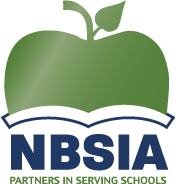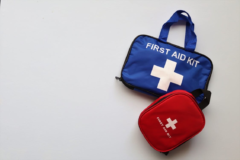
Home
Field Trip Guidelines and Procedures
These guidelines and procedures, used in conjunction with Member policy, will provide you with guidelines for conducting field trips and explain why it is important that you be fully aware of the responsibilities that you incur on a field trip. Understanding these responsibilities will protect your students and could prevent lawsuits.
- Trips must be in connection with school-related functions.
- All trips must have the written approval of the principal/Member
- All trips must be in compliance with Member rules and regulations governing such trips.
- All trips must be under the supervision of a certificated Member employee.
- Parents must be fully informed of the trip and mode of transportation.
- All students must have the written permission of their parent or legal guardian.
- All participants must have a signed a medical authorization form.
- Annual
- Specific (Minors)
- Adult
Considerations for Principals Regarding Field Trips
- Why is the activity being proposed?
- Is the purpose, goal and organizational structure clear?
- Exactly what is involved in the activity?
- How is the activity going to be accomplished/operated?
- Will there be adequate supervision for the students? Recommended supervisor to student ratios:
- Ratio of 1 to 5 for grades K-2
- Ratio of 1 to 10 for grades 3-12
- How is the transportation being handled?
- Who is sponsoring/responsible for the activity?
- What are the hazards or risks that should be considered?
- What are the benefits of the activities vs. the risks involved?
- Following a careful evaluation, if the decision is made to go forward with the activity, consider ways to reduce the exposure and likelihood of loss by considering if there are alternative ways to conduct any of the aspects of the field trip which may be safer than as proposed. At least one teacher, employee, or volunteer should carry a functional cellular phone on the trip.
HEALTH PROCEDURES FOR CAMP
First Aid Kits
An adequate First Aid Kit should be on each bus and in camp at all times. Only the Camp Director, or their assistant should give first aid, unless they are not available.
First Aid Emergency
Any injuries or illness that warrants prompt attention by a physician should be reported to the Member/school and arrangements will be made to get the child to a doctor.
Extreme Emergency
If an injury or illness requires immediate attention, contact the local ranger, police, or sheriff for transportation, then contact the school (the Member will contact the parent/guardian) and give the name of the child, nature of injury, and where the child is being taken.
Reporting To Parents/Guardians
Any injury should be reported to the parent/guardian. If a parent/guardian meets a child at their bus stop or departure point and the child has been injured during the course of the day, the Camp Director or leader should be sure to go with the child to tell their parent/guardian the nature of the injury and how it happened. Children have been known to exaggerate and some parents/guardians tend to get emotional when their child has been injured. This, more than anything, will impress parents/guardians with the Member's concern for the welfare of their child.
Recommended First Aid Equipment/Supplies:
- 3" x 3" sterile gauze bandages
- 4" gauze roller bandages
- 4 - 2" gauze roller bandages
- 4 - triangular bandages
- 1 - 1" roll adhesive tape (10 yd.)
- Student Accident Form (duplicate)
- 6 - 4" x 4" sterile pads (plastic covered)
- 4 - disposable towels (plastic covered)
- Cotton balls (plastic covered)
- Ammonia inhalant
- Paper bags
- Band-Aids (in small metal box)
- 2 - Sanitary pads
- Disposable ice bag
- Vaseline tube
- Liquid soap
- Safety pins
- Shoelaces
- Scissors
- Needle/Thread (in small container)
- Pencil
- Extra Writing Booklet
- Required forms (plastic covered)
- Daily log for student accidents/illness
- Emergency illness/injury information records
- 1 - American Red Cross First Aid textbook or written instructions for use of contents of a First Aid Kit.
First Aid Kit Requirements for Camping Trips:
Education Code 32041: The teacher shall have a First Aid Kit in their possession while conducting a field trip.
Education Code 32043: Whenever a field trip is conducted into an area which is commonly known to be infested by poisonous snakes, the first Aid Kit shall include a snake bite kit.

TRANSPORTATION FOR FIELD TRIPS
Private Transportation
The use of private transportation is authorized provided that:
- The driver possesses a valid California driver's license.
- The driver is at least 21 years old.
- The vehicle carries automobile liability insurance.
- The vehicle is in safe driving condition.
- The driver must fill out a Personal Automobile Use Permission Form.
- A "Pre-Trip" meeting with drivers is suggested.
Member Transportation
- Operating records of the buses will be maintained by the Member.
- There will be a program of preventive maintenance with appropriate records.
- All drivers will be trained and supervised by the Member.
Commercial Transportation
- Chartered buses are authorized provided that:
- The driver possesses a valid license to operate a bus.
- The charter company provides proof of automobile liability insurance and workers' compensation coverage for their employee. You can consult the Federal Motor Carrier Safety Administration’s Website to help evaluate the carrier’s safety record.
- NOTE: Only those students involved in the field trip should be transported!
MEMBER SPONSORED ON-SITE SPECIAL ACTIVITIES
Frequently, parents volunteer their time to conduct special activities for students on campus after normal school hours. An example would be a martial arts expert donating time to teach self defense to interested students.
Since this is a Member-sponsored activity, there is extra liability exposure to the Member in allowing these activities. If the volunteer has their own personal liability insurance coverage, then the Member should not agree to defend and indemnify unless absolutely necessary.
A permission form with the appropriate release should be signed by the student and the parent/guardian of a participating minor student before the student is allowed to participate in the class.
If the instructor is charging the students for their time, then they are "in the business." The activity should not be Member-sponsored and the instructor should pay fair rental value of the facility and comply with all rules and insurance requirements pursuant to the Member's "Use of Facilities" and "Civic Center Act" policies.
NON-MEMBER SPONSORED ACTIVITIES
Employees/volunteers often initiate special off-campus activities for students on weekends or after school hours. Examples of such activities are swim parties, picnics, barbecues, hiking, camping and trips to amusement parks. Whether the employee/volunteer is a sponsor or not, the employee/volunteer, the Member or both could be held liable if a student participant sustains an injury.
Due to the nature of certain activities, there may be an inference of Member participation or sponsorship. For instance, the activity may be promoted on campus, using Member supplies, equipment, or Member name. The District Office should be notified of any events or activities of this type.
If this event is a Member-sponsored activity, use the appropriate notice forms. If this is a non-Member sponsored activity, to reduce unwanted exposure, reasonable steps must be taken to notify the public and participants of the Member's non-involvement. Consider using the following "Non-Member Sponsored Activity" form.
CONTRACTS FOR USE OF FACILITIES
Frequently you will be asked to sign an agreement to use the facilities of another during your field trip or camp visit. These agreements establish the details for your visit (i.e., dates, cleanup arrangements, deposits, etc.). They also typically have hold harmless and indemnification language that addresses liability coverage and responsibility for damage or injury while the facility is in your possession (see the next page for samples).
NBSIA strongly encourages you to review this language carefully and understand what you and your Member will be responsible for. For example, some facility agreements may make you responsible for any and all losses, regardless of who is at fault, while others accept responsibility only for their sole negligence or intentional acts. Obviously, the most equitable agreement is a mutual hold harmless in which both parties agree to take responsibility for their own acts as well as protect the other party from harm.
If you would like us to review the agreement, please contact NBSIA. When you do not have the option of changing the agreement language, your safety and risk management practices become particularly important.
CERTIFICATES OF INSURANCE
Often you will be asked to provide a certificate of insurance or evidence of coverage indicating that you have liability or other coverage and in what amounts. If you need such a certificate, please contact NBSIA and we can make the arrangements. Please allow at least five (5) working days to process this certificate. Use the following link for more information: Certificates of Insurance
HOLD HARMLESS AND INDEMNITY AGREEMENTS
One-Side Hold Harmless and Indemnification Agreement:
This is an Agreement whereby one party agrees to defend, indemnify and hold harmless the other party for any and all losses, however they may be caused. For example, user of Member's facilities signing such an agreement would be responsible for the losses resulting from their own negligence as well as losses resulting from premises liability, such as a participant tripping and falling in the Member's parking lot.
This will provide the greatest level of protection for the Member since any claim incurred by the participants in the activity would be the user group's responsibility. This is an appropriate hold harmless and indemnification agreement since the claim would not occur "but for" the user group's use of the Member facilities.
Mutual Hold Harmless and Indemnification Agreement:
This is an agreement whereby each party to the contract agrees to defend, indemnify and hold harmless the other party for losses resulting from each party's respective negligence. In other words, the user of Member's facilities would agree to defend, indemnify and hold harmless the Member for any losses resulting from the user's negligent action and the Member would agree to defend, indemnify and hold harmless the user for any losses resulting from any Member's negligence, such as premises liability types of claims.
"Sole Negligence" Hold Harmless and Indemnification Agreement:
This Hold Harmless and Indemnification Agreement states that one party or other, or both, agree to defend, indemnify and hold harmless the other party for losses or injuries resulting from that party's sole negligence. The problem with this agreement is that relatively few claims have only one sole cause. If the user group is 99% responsible and the Member is 1% responsible, the user group would not defend and indemnify the Member because the loss was not the result of the user group's sole negligence. This type of Hold Harmless and Indemnification Agreement is not recommended.